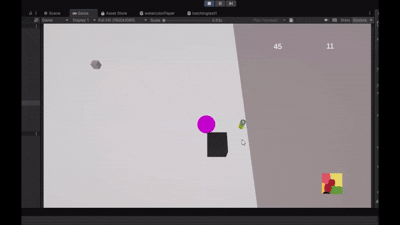



This is a work in progress currently being developed by myself and two friends (our artist and our animator) in Unity 6.1. This concept was inspired by our artist’s love for games like Pikmin and Katamari, so we wanted to combine the concepts of “taking over the world” and “controlling hundreds of minions” and after a while of brainstorming we came up with Pipi’s Melody: a game about a piper’s quest to take over the tri-state area with nothing more than rats found in the city. My role is as the lead designer and sole programmer for the project.
A big part of the concept would be that there would be a ton of different types of rats with different abilities, and that the type of rat you got in different circumstances would be more or less random, forcing the player to create different gameplans around different pulls of rats. Throughout the city there are different obstacles that will need different types of rats to overcome, and space will need to be made so you can flood the area with as many rats as the space can take.

As of writing we’re just at the beginning of development and trying to create the pieces that will fit together to create cohesive gameplay loops. Regular rats can be bought to run off and make more money for which you can buy rarer rats with, and chef rats can make food for rats which feed existing rats and therefore spur them to reproduce. Cats roam the alleyways and will attack and attempt to eat rats until the player can come to scare them off, or a bodyguard rat can accompany a rat trying to get by to protect the both of them.

Right now we’re creating a simple slice to show off, so this page will get updated with further progress.